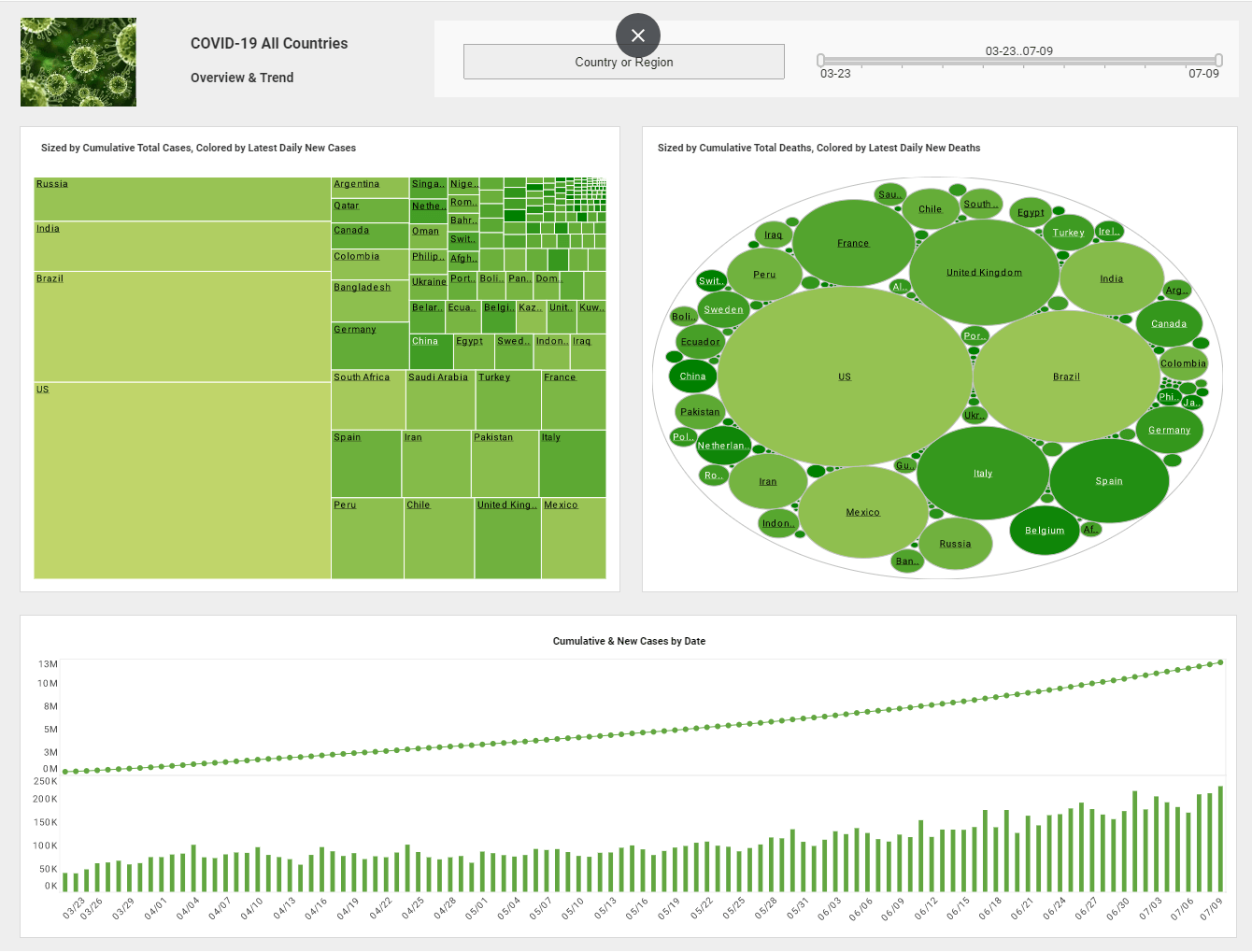What Is Pervasive BI?
Below is the transcript from a podcast from InetSoft Technology. The speaker is Mark Flaherty, Vice President of Marketing at InetSoft.
It’s the ability to deliver integrated, right-time data warehousing information to all users including front-line employees, suppliers, customers, and partners. It provides an enterprise visibility, insight and facts to make smarter decisions in all processes at all times. In most companies, this means liberating existing infrastructure by connecting it to multiple operational business processes.
What role does data integration play in pervasive BI?
It certainly simplifies and it makes it more possible to become pervasive. InetSoft's unique data mashup engine allows combinations of almost any data source into a common BI infrastructure so you can make dashboards and reports that previously had to be done manually in a spreadsheet, for instance.
In the traditional approach data environments were highly fragmented. It was very difficult to move to an enterprise-wide model. Adding the operational integration in addition to integrating data enterprise wide was considered not feasible until recently. This is where we felt it would by highly valuable to describe the new information supply chain environment and pervasive BI strategy.
| #1 Ranking: Read how InetSoft was rated #1 for user adoption in G2's user survey-based index | Read More |
Pervasive BI Architecture Includes Transactional Services
The pervasive BI architecture includes transactional services, for example, OLTP, that provide enterprise bookkeeping functions. This is where we find traditional call center automation, operational CRM, enterprise resource planning, supply chain management, and legacy applications. Data integration services bridge multiple domains providing both continuous streams of information as well as flat file data acquisition.
Acquiring change data from the transactional repositories, the data integration services extract, discover, cleanse, transform, and deliver the data to multiple subscribers. Decision repositories are the enterprise data warehouses, data marts, and operational data stores. They collect the results of data integration services and provide high-speed access to data content.
What are some examples of how customers are implementing pervasive BI?
One is automated insurance claims, triage, and fraud detection. Personalized next best offer on Web sites, ATMs, and point of sales devices is another set of examples. Supply chain activity monitoring, retail out of stock monitoring on promotional items, real-time money laundering are several more.
How BI is used in fighting money laundering
Business Intelligence (BI) plays a crucial role in the fight against money laundering by enabling financial institutions and regulatory bodies to detect suspicious activities, identify patterns of fraudulent behavior, and ensure compliance with anti-money laundering (AML) regulations. Here's how BI contributes to this effort:
1. Data Integration and Aggregation
Money laundering involves moving illicit funds through multiple accounts, banks, and jurisdictions to obscure their origin. BI tools consolidate data from various sources - including bank transactions, customer records, and external regulatory databases - into a single platform. This integration allows for comprehensive analysis and detection of suspicious behavior across multiple financial systems.
2. Advanced Analytics for Pattern Recognition
BI systems leverage advanced analytics, machine learning, and AI to identify money laundering patterns. By analyzing large volumes of transactions, these tools can detect anomalies such as:
-
Structuring (Smurfing): Breaking large transactions into smaller ones to avoid reporting thresholds.
-
Layering: Moving money through complex transactions to obscure its origin.
-
Integration: Merging illicit funds with legitimate financial activities.
BI dashboards allow investigators to visualize transaction trends and pinpoint unusual spikes or inconsistencies.
3. Real-Time Monitoring and Alerts
Traditional AML measures rely on retrospective transaction reviews, which can delay detection. BI systems enhance monitoring by providing real-time dashboards and automated alerts when suspicious transactions occur. For example, if a customer's transaction history suddenly deviates from their usual pattern (e.g., large deposits followed by immediate withdrawals), the BI system triggers an alert for further investigation.
4. Risk Scoring and Profiling
BI tools help assign risk scores to customers based on:
-
Transaction history
-
Geographic location
-
Industry sector
-
Past suspicious activity
High-risk individuals and entities (e.g., politically exposed persons or organizations dealing with large cash transactions) can be flagged for enhanced due diligence (EDD).
5. Regulatory Compliance and Reporting
Financial institutions are required to comply with AML regulations such as the Bank Secrecy Act (BSA), USA PATRIOT Act, and EU's Anti-Money Laundering Directives (AMLD). BI simplifies compliance by:
-
Automating Suspicious Activity Reports (SARs).
-
Tracking Know Your Customer (KYC) compliance.
-
Generating audit trails for regulators.
By integrating compliance data with AML efforts, BI reduces the burden on financial institutions while improving regulatory adherence.
6. Network Analysis for Hidden Relationships
Money laundering networks often involve shell companies, multiple account holders, and offshore transactions. BI tools employ graph analytics to uncover hidden connections between entities by visualizing relationships in financial networks. This helps investigators track money flows and expose criminal syndicates.
7. Case Management and Investigation Support
BI platforms provide centralized dashboards for AML teams to manage cases, track investigations, and document findings. This streamlines the reporting process and ensures efficient collaboration between compliance officers, auditors, and law enforcement agencies.
| Next: Pervasive BI Customer Example |
